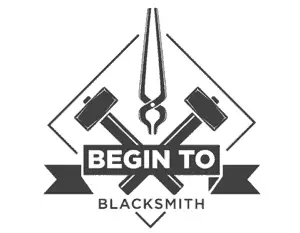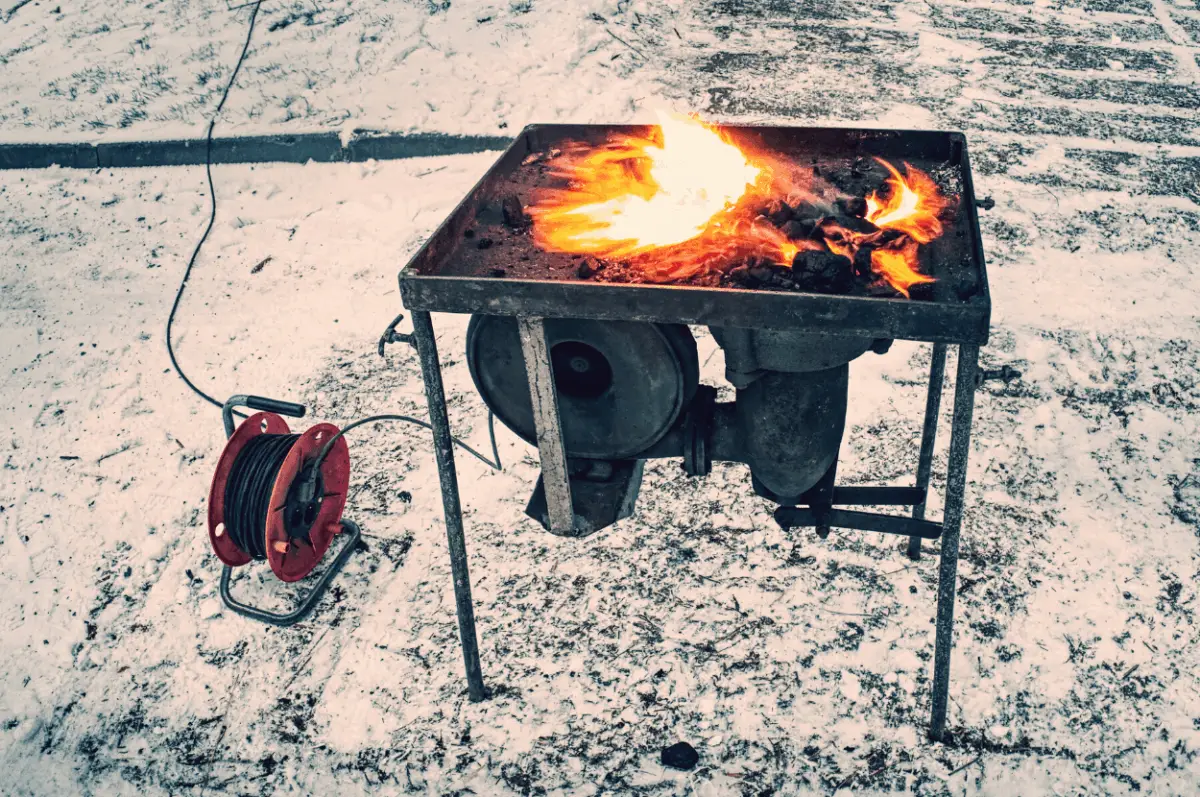Blacksmithing is a pretty flexible hobby. Whether you are indoors or outdoors, you have plenty of options with how you want to go about your day. There’s enough flexibility with forge setups that you can make almost anything work.
However, one frequent question that many beginner blacksmiths ask is whether or not it’s okay to try forging in cold weather? If you’re working outside, you don’t always have the luxury of good weather. Sometimes there’s a storm overhead, or you have some scattered showers or even some snowfall that is expected for the next couple of days.
In short, you definitely can use a blacksmithing forge when it’s cold. With a little bit of creativity, you can overcome almost anything mother nature throws your way.
How much rain is too much?
Obviously, a small drizzle or some scattered showers that go away quickly aren’t much of a threat to your forge. Most outdoor forges have some degree of protection that ensures you won’t be getting your fire doused due to some rain.
Gas forges, like the portable Hell’s Forge propane burner (which I recommend for beginners), is accessed via horizontal openings. This means that unless you’re in a terrible storm with crazy winds where rain is coming in from the side, your forge can still work fine in regular rainy conditions.
For non-gas forges, like coal forges or wood fire forges, you might have some more difficulties. It’s already tricky to maintain blacksmithing temperatures when you’re working with these types of forges, especially if you’re still a beginner blacksmith. As such, you might end up having some trouble trying to keep your forge’s temperature steady, especially if the rain continues to grow.
What about snow?
Blacksmithing in the snow is quite similar to blacksmithing in the rain, but there are some differences.
For one, snowy weather tends to mean that the actual temperature itself will be colder. Whereas you can have rainy weather even when it’s warm, snow won’t form unless it’s much colder. This could make it harder to heat up your forge and maintain a proper temperature. Again, this won’t be a problem for gas-powered forges (which are what I recommend for beginner blacksmiths) but can become an issue for coal and wood-based forges.
If outside is really cold, you might want to try and heat up your anvil and other blacksmithing tools as well. Suddenly heating up an otherwise cold piece of metal could potentially, if done enough times, damage or even break your tool. If your blacksmithing equipment has been left outside during a blizzard, it’s probably not going to be worth it firing up the forge in those kinds of temperatures.
If you are going to do the preheat your tools/anvil route, which is what I recommend if its cold outside, consider using a propane blower or something equivalent. Getting your anvil preheated makes a pretty big difference, and the same can be said for your tools as well.
If you’re working in cold temperatures, don’t forget to dress up in layers. While things might seem cold when you start, as you begin heating away at your stock, the heat of the forge as well as the steady exertion is going to make you warm.
As for your forge, it’s a similar story as when you’re working in the rain. Gas-powered forges tend to have a major advantage, especially since most of them have openings from the side, making it harder for snowfall to enter. Coal and wood-powered forges, on the other hand, could easily get overwhelmed with enough snowfall.
Using cover
Often times, blacksmiths that have some sort of a shelter (like a nearby garage), but absolutely need to smith outside due to ventilation or other issues use a mixed approach. They keep their forge outside, but everything else is nearby in the garage or under a shelter. This way, you can heat up your stock and then just move it over to your anvil, where you don’t need to worry about water cooling off your piece of metal.
Other times you don’t have the liberty of having something like a garage nearby. That’s why I recommend beginner blacksmiths that are working outdoors (and that are relatively in the wild) to use tents. Basic tents can be simple to set up, whether that be a large camping tent or something else, and can offer you adequate protection from the rain while working.
There are a few websites that offer dedicated blacksmithing tents. One of those is Tentsmiths, a company dedicated to offering vintage, blacksmithing tents in the same style that blacksmiths used hundreds of years ago. While it might be a bit overkill if you’re just looking for a basic tent, it’s definitely something that you should consider if you enjoy a more ‘traditional’ blacksmithing experience.
However, for the most part, having some sort of cover is pretty much essential to blacksmithing in the outdoors. It doesn’t have to be anything fancy at all, just something that can cover up your anvil and tools. If you are already working outside in the wilderness, you should already know how to set up a basic camp or shelter of some kind. Just make sure you have proper ventilation even if your forge is outside in the rain or snow.
When should you NOT work outside?
While it’s possible to manage even if the worst weather conditions, there’s a point where it makes sense to just give up and wait for things to settle down. If you’re working outside, severe thunderstorms with hail as well as blizzards with multiple inches of expected snowfall are where you should draw the line and give up for the day.
If you need to wear gloves during the cold weather, it also becomes harder to hold your hammer and tools as needed. Taking off your gloves might end up in you losing sensation in your fingers, which will also make it harder to use your blacksmithing tools effectively (not to mention getting hypothermia, which is quite bad in and of itself).

